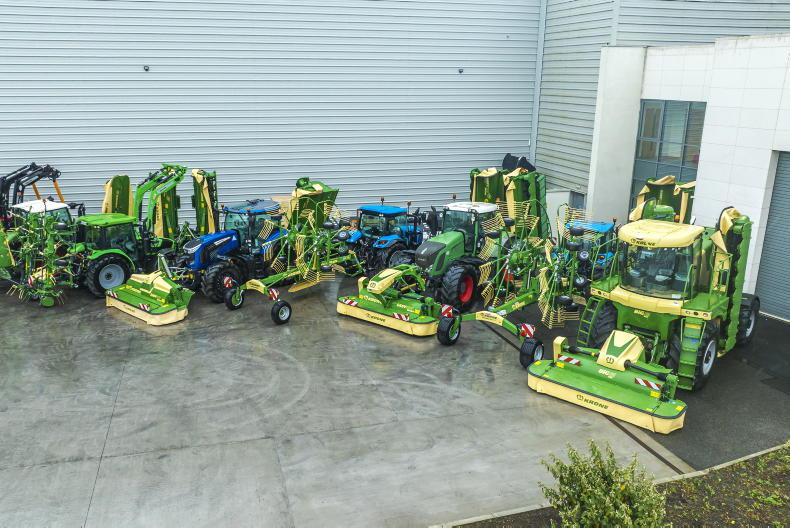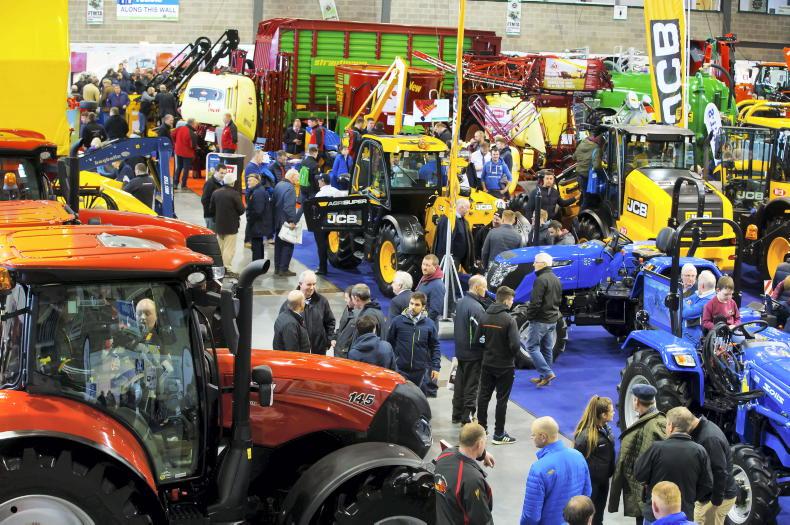European machinery dealers are currently carrying record levels of stock, with dealers now struggling to pass on their orders to end users, according to the latest CEMA market trends report.
The report says that dealer stock levels in most European markets are significantly higher than they were in 2019, which were extremely high.
Over the past few months, we are seeing a swing of the pendulum since the COVID-19 era when dealers couldn’t get machines into stock quick enough to meet the demand at the time.
Each month, CEMA (the association representing the European agricultural machinery industry) carries out a survey within the European agricultural machinery industry with coverage of all major sectors to look at the current and future business situation.

Over the past few months, we are seeing a swing of the pendulum since the Covid-19-era when dealers couldn’t get machines into stock quick enough to meet the demand at the time.
Despite the seemingly negative short-term outlook, it’s worth noting that this is off the back of a very busy five- to six-year period for European manufacturers.
As little as seven to eight months ago, European manufacturers were quoting an average lead time of 5.5 months for new orders, which was still very high in a historical comparison, but lower than at any time in the past two years.
Strong end to 2023
From speaking with manufacturers and dealers in Ireland, the mood here isn’t as bad as it seems to be in Europe. Most Irish dealers and manufacturers had a strong end to the 2023 calendar year and have started 2024 on a positive note.
Irish farmers and contractors in the system of upgrading their machines after so many hours or so many seasons of use seem to be sticking with these cycles.
However, speaking to Irish manufacturers supplying the UK market, business seem to be a lot quieter over the water.
Within each month’s report, the association publishes a general business climate index for the agricultural machinery industry in Europe.
The January report showed a continued downward trend. In January, the index decreased from -48 to -50 points (on a scale of -100 to +100).
The association began flagging a dip in the marketplace last May, with confidence beginning to dip in the tractor and tillage market first, followed by in the livestock machinery and grass harvesting segment.
According to the report, no European market has positive turnover expectations.

From speaking with manufacturers and dealers in Ireland, the mood here isn’t as bad as it seems to be in Europe.
More than half of the survey participants consider the current business situation to be unfavourable and it notes that two-thirds expect their turnover to decline in the coming six months.
A total of 13% consider current business to be good, with 8% hoping to grow their business in the next six months.
It says that western Europe and the Nordic countries have higher confidence levels than those in central and eastern Europe.
European machinery dealers are currently carrying record levels of stock, with dealers now struggling to pass on their orders to end users, according to the latest CEMA market trends report.
The report says that dealer stock levels in most European markets are significantly higher than they were in 2019, which were extremely high.
Over the past few months, we are seeing a swing of the pendulum since the COVID-19 era when dealers couldn’t get machines into stock quick enough to meet the demand at the time.
Each month, CEMA (the association representing the European agricultural machinery industry) carries out a survey within the European agricultural machinery industry with coverage of all major sectors to look at the current and future business situation.

Over the past few months, we are seeing a swing of the pendulum since the Covid-19-era when dealers couldn’t get machines into stock quick enough to meet the demand at the time.
Despite the seemingly negative short-term outlook, it’s worth noting that this is off the back of a very busy five- to six-year period for European manufacturers.
As little as seven to eight months ago, European manufacturers were quoting an average lead time of 5.5 months for new orders, which was still very high in a historical comparison, but lower than at any time in the past two years.
Strong end to 2023
From speaking with manufacturers and dealers in Ireland, the mood here isn’t as bad as it seems to be in Europe. Most Irish dealers and manufacturers had a strong end to the 2023 calendar year and have started 2024 on a positive note.
Irish farmers and contractors in the system of upgrading their machines after so many hours or so many seasons of use seem to be sticking with these cycles.
However, speaking to Irish manufacturers supplying the UK market, business seem to be a lot quieter over the water.
Within each month’s report, the association publishes a general business climate index for the agricultural machinery industry in Europe.
The January report showed a continued downward trend. In January, the index decreased from -48 to -50 points (on a scale of -100 to +100).
The association began flagging a dip in the marketplace last May, with confidence beginning to dip in the tractor and tillage market first, followed by in the livestock machinery and grass harvesting segment.
According to the report, no European market has positive turnover expectations.

From speaking with manufacturers and dealers in Ireland, the mood here isn’t as bad as it seems to be in Europe.
More than half of the survey participants consider the current business situation to be unfavourable and it notes that two-thirds expect their turnover to decline in the coming six months.
A total of 13% consider current business to be good, with 8% hoping to grow their business in the next six months.
It says that western Europe and the Nordic countries have higher confidence levels than those in central and eastern Europe.








 This is a subscriber-only article
This is a subscriber-only article










SHARING OPTIONS: